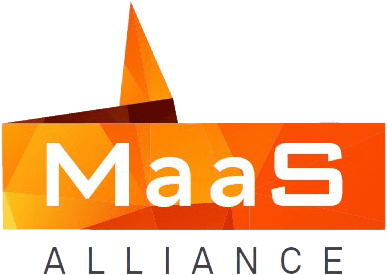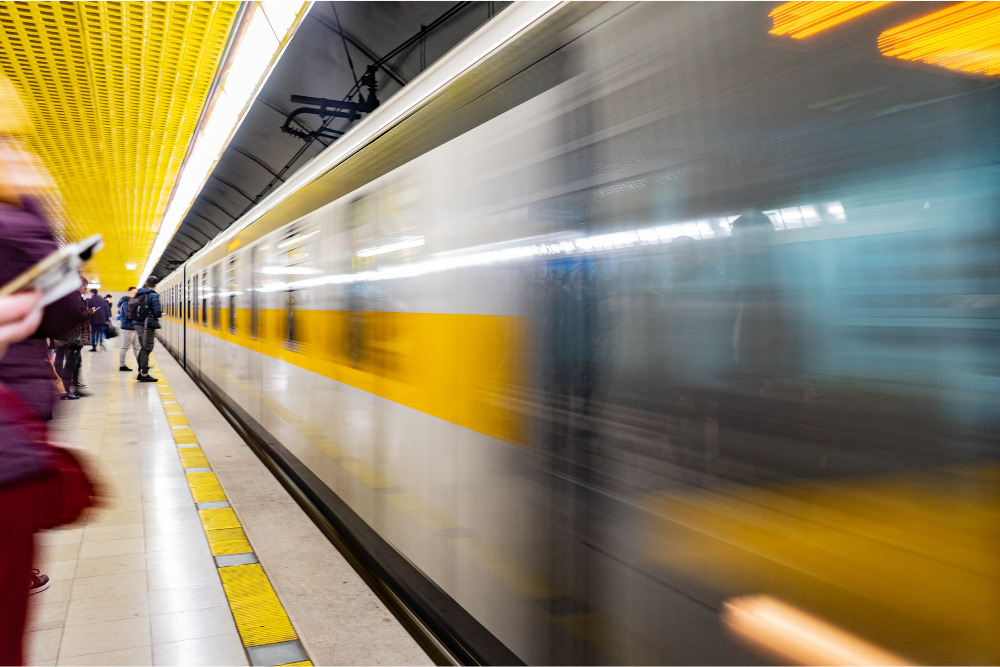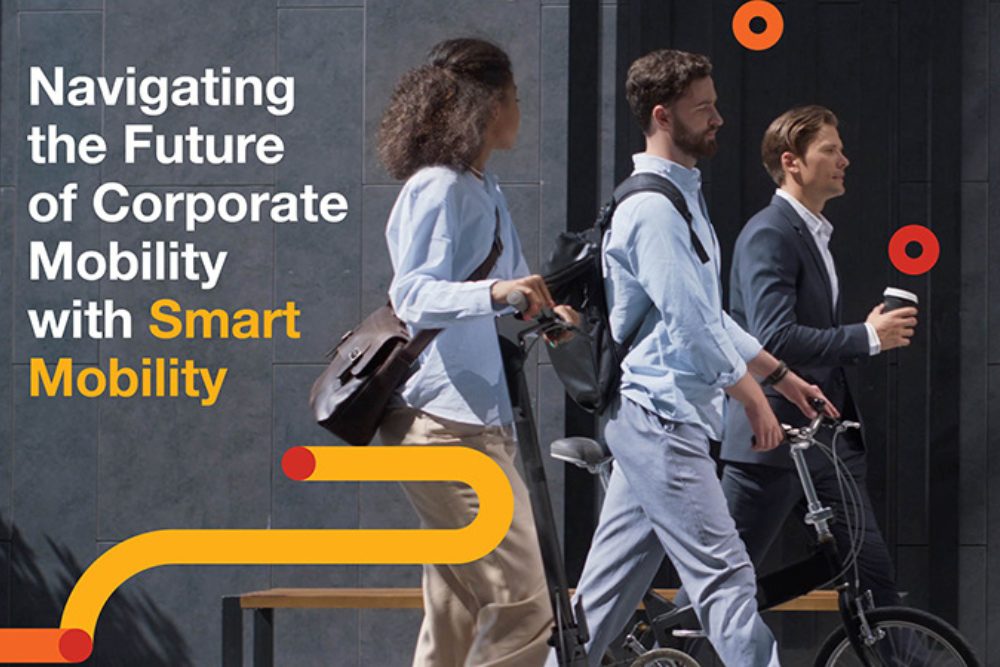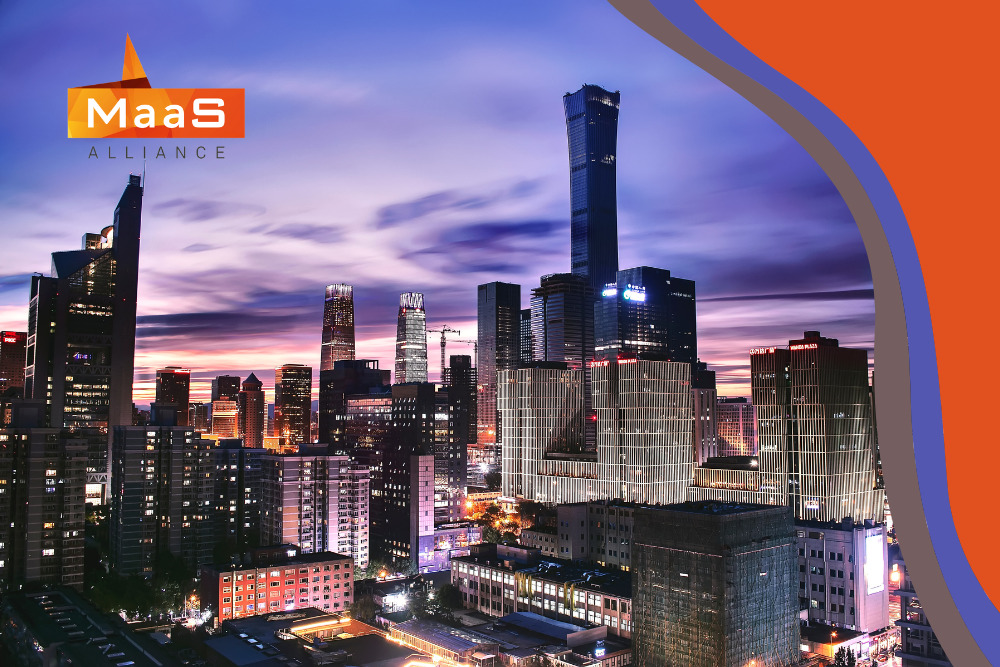
Beijing Case of Mobility-as-a-Service Scheme[1]
Authors: Su Song (WRI China) and Miaoqing Zhong (WRI China)
- Background
- Current situation: As of 2020, the motor vehicle fleet in Beijing reached 6.57 million, including 389,000 electric vehicles. The total number of daily trips on working days amounted to 36.19 million, with green transport (e.g., bike, walk, and public transport) accounting for 73.1% of the total. Among the various modes of green transport, metro accounted for 14.7%, buses (including electric buses) accounted for 11.7%, bicycles accounted for 15.5%, and walking accounted for 31.2%.
- Policy background: The following policies have been supporting Beijing’s MaaS scheme: “The 14th Five-Year Plan for Transport Development and Construction in Beijing ” (2022), “2021 Beijing Comprehensive Traffic Management Action Plan” (2021), “Beijing Implementation Plan for Accelerating the Global Benchmark for the Digital Economy” (2021), “Outline of Digital Transport Development Plan” (2019), “New Generation Smart Transport Management Development Plan (2018-2020)” (revised in 2019), and “Beijing Management Measures for Opening and Sharing Transport and Travel Data (Trial)” (2019).
- Objectives
The objective of Beijing’s MaaS scheme is to integrate mobility services across all modes, including buses, metro, commuter train, walking, cycling, ride-hailing and ridesharing services, aviation, railways, long-distance buses, and private vehicles. The aim is to provide citizens with comprehensive and convenient “door-to-door” intelligent mobility services throughout the entire journey, encompassing “pre-trip smart decision-making, in-trip guidance, post-trip green incentives, and intercity travel planning services”.
- Leading authority, region, and target users
- Leading authority: Beijing Municipal Commission of Transport (BMCT). This scheme operates through a government-company collaboration model, leveraging companies such as Gaode Maps (AutoNavi) and Baidu as the MaaS platform operators and mobility service integrators.
- Region: Beijing MaaS scheme covers the entire area of Beijing, with a strong emphasis on promoting green transport (e.g., shared bike, public transport). Future expansion plans include the integration services of MaaS for the Beijing-Tianjin-Hebei city cluster.
- Target users: Individual travelers (2C) in Beijing.
- Storyline
- 2019: BMCT has formulated the “Beijing Management Measures for Opening and Sharing Transport and Travel Data (Trial)”, and been improving the big data management mechanism, implementing its work responsibilities. BMCT also opens up real-time bus forecasts, metro crowdedness, roadside parking spaces and other data to MaaS platform operators (i.e., Gaode and Baidu) to improve the level of services. BMCT, Beijing Municipal Ecology and Environment Bureau (BMEEB), and Gaode signed a strategic collaboration agreement, jointly launching the “Beijing Integrated Green Mobility Service Platform” (known as “Beijing MaaS Platform”). Through government-company collaboration and the integration of traffic data, the platform provides users with an integrated and comprehensive smart mobility service that combines various transport modes.
- 2020: BMCT and other departments jointly initiated the “MaaS Travel, Green Life” campaign, introducing carbon-inclusive incentives for green travel into the MaaS Platform. For the first time, carbon reductions through MaaS user’s behavior change, i.e., shifting from private car to green modes (e.g., shared bike, bus, metro), were incorporated into the carbon market and have the money payback, establishing an incentive mechanism for green travel. Simultaneously, efforts were made to enhance MaaS Platform’s functions, such as real-time bus forecasts, end-to-end travel guidance, public transport planning, and off-peak travel guidance. These functions provide users with intelligent guidance for urban “door-to-door” travel and intercity travel planning services.
- 2021: Beijing proposed to establish a global benchmark for the digital economy and implement full digitization of urban transport system, including the Cooperative Intelligent Transport Systems (C-ITS). The goal was to establish a fully digitized smart public transport system, develop intelligent metros, and create integrated platforms for smart customer service, maintenance, and management as well as complete route projects.
- 2022: “The 14th Five-Year Plan for Transport Development and Construction in Beijing” further emphasizes the continuous improvement of the comprehensive transport system services. It focuses on integrating the networks of all transport modes, relying on the MaaS platforms, and enhancing the capability to provide one-stop services across modes and regions.
- 2023: BMCT and BMEEB jointly launched the “Beijing MaaS 2.0 Work Plan” (the “MaaS 2.0 Plan”), marking the transition of Beijing’s MaaS to the second stage. In stage 2.0, Beijing will continue to adhere to the “green and integrated” development strategy, focusing on providing high-quality “door-to-door” green and integrated mobility services. The goal is to build a MaaS system with “promising governance + effective market + carbon-inclusive empowerment.” The work will concentrate on four key areas: 1) expanding and optimizing services, 2) building a mutually beneficial ecosystem, 3) reducing carbon emissions across all services, and 4) creating Beijing’s MaaS brand as a global benchmark. The task for the next three year for MaaS 2.0 is to improve user’s experience of the integrated green mobility services; and increase the coverage of carbon-inclusive services. By the end of 2025, the MaaS 2.0 platform will serve more than 6 million people daily for green travel, with a 20% penetration rate of green travel services, and reaching a 3% conversion rate for green travel.
- Ecosystem
The key stakeholders engaged in Beijing MaaS scheme, as well as their roles and tasks for the MaaS scheme are shown in the following table.
| Core Stakeholders | Type | Role |
| Beijing Municipal Commission of Transport | Government (supported by the affiliated think tank Beijing Transport Institute) | – Role: Initiator and coordinator of the Beijing MaaS platform.
– Issued ” Beijing Management Measures for Opening and Sharing Transport and Travel Data (Trial)”. BMCT integrates public data resources and opens up four types of data to the public: ground transport, metro, static traffic data, and road network traffic data. Establishing the data foundation for the MaaS platform. – Provide a methodology for carbon reduction accounting for green transport. BMCT promotes the green-travel-related-PCER’s trading at the Beijing local carbon market. – Optimize the infrastructures for green travel, such as the improvements of bike lanes and the on-demand bus networks. – Promotion of the MaaS platform as well as the green transport modes. |
| Gaode Maps | Digital map content and navigation solutions company (Parent: Alibaba Group, Chinese multinational technology company specializing in e-commerce, retail, Internet, and technology[2].) | – Role: MaaS platform operator and mobility services integrator.
– Strategic partner of BMCT on MaaS scheme. Access dynamic traffic data, including metro crowdedness data, real-time bus forecast and other data. – Provide navigation and real-time information, introduce “bus/metro real-time card”, provide multimodal integrated Information on route planning, walking navigation, transfer guidance, and arrival reminder. – As a trading agent: Collect individual user’s carbon reductions of the green travels from the MaaS platform, and trade the PCERs at the Beijing local carbon market. – Return the benefits from carbon trading to MaaS users who used green modes, in the forms of ticket discount, shopping coupon, and donations to the public. – Integrate payment systems: Combing Beijing Yitongxing, Beijing Bus and Beijing Yikatong accounts to realize One Card payment and carbon account. |
| Baidu Maps | Digital map content and navigation solutions. Provided by Baidu, the search engine company. | As above |
| Beijing Emissions Trading System (BJETS) | Local ETS | – Role: Local carbon trading platform where carbon emission reductions from the MaaS platform are traded as voluntary certified emission reduction (PCERs) credits. |
| Beijing Public Transport Corporation | Bus Service Provider | – Provide bus transport services.
– Provide BMCT with information on bus routes, bus stops, real-time forecasts and crowdedness data. |
| Beijing Subway Ltd. | Metro Service Provider | – Provide metro transport services.
– Provide BMCT the metro line information, station information, crowdedness information and arrival information. |
| Beijing Yidongxing, Beijing Bus, Beijing Yikatong | Payment provider | – Provide payment access.
– Provide access to Baidu and Gaode. Travel data generated by mobile payment can be used for carbon calculation |
| Shared mobility service providers | Mobility service provider | – Provide various kinds of mobility services integrated in the MaaS platform, e.g., bike sharing, ride-hailing and ridesharing services, traditional taxi.
– Companies include: Didi, Caocao, Hello Bike, Shouqi, Yangguang, etc. |
| Other businesses | Non-mobility-related business | – Add in the MaaS platform as the online shops, provide discounted services to the green travel users by using the benefit returned from carbon trading.
– Companies include: Hema (food retail), and other Alibaba e-commerce stores. |
- Business and Management Model
BMCT is leading, coordinating, and responsible for the MaaS platform integration and data sharing.

Source: Beijing Transport Institute (2022)
Figure 1: Management framework of Beijing MaaS Platform
- Data Sharing
In 2019, BMCT issued the “Beijing Management Measures for Opening and Sharing Transport and Travel Data (Trial)” to promote data sharing to the society. The policy requires a list of open data, including bus, metro, static traffic, and the road network traffic data. The data types include both static and dynamic data. Data from the transport companies are centrally managed by the BMCT’s Transport Information Center. BMCT conducts necessary data processing and then shares them with relevant participants in the form of digital services.
In MaaS 2.0 phase, Beijing will continue to strengthen the digital infrastructure, improve the framework, management systems, standards, interface, data access, and the assessment system. It will also ensure the data security and the relevant data management mechanism. MaaS 2.0 will involve more companies and other stakeholders, and enhance engagement through information and data sharing.
- Ticketing and Market Positioning
The ticket prices remain unchanged in the current phase of MaaS scheme. The target users are mainly the urban commuters. Beijing MaaS platform will continue to provide users a one-stop service through various transport modes and improve the user experience.
- Monitor and Assessment
An annual assessment of MaaS performance is conducted, evaluating the service from several dimensions, including data security, level of service, social impact, etc. Based on the assessment results, relevant improvements and tasks will be designed and performed.
- Policies
The “14th Five-Year Plan for Transport Development and Construction in Beijing ” released in 2022. The policy aims to promote the smart parking services, encourage green and low-carbon transport, increase the share of green travel, and improve the MaaS platform with integration with more green transport services.
- Connecting MaaS with carbon market
Over the past three years (since 2019), Beijing’s MaaS platform has consistently adhered to city’s “green and integrated” transport development strategy, receiving positive responses from the public. As of now, Beijing MaaS platform has serviced over 30 million users, providing green transport services (e.g., bus, metro, shared bike) to an average of 4.5 million trips daily.
The MaaS platform has been adopting an incentive mechanism to encourage users choose green transport modes. Since September 2020, Beijing has introduced the “MaaS Travel, Green Life” Carbon-Inclusive Campaign, which is built on the MaaS platform to nudge users for green travel. MaaS users who participated in the Campaign will automatically get the carbon reduction credits from their green travel behavior (e.g., shared bike, bus, metro). Users can then exchange the credits for discounted public transport cards, shopping vouchers, etc. By now, the campaign has attracted over 3.54 million registered users, contributing to a cumulative carbon reduction of nearly 400,000 tonnes[3].
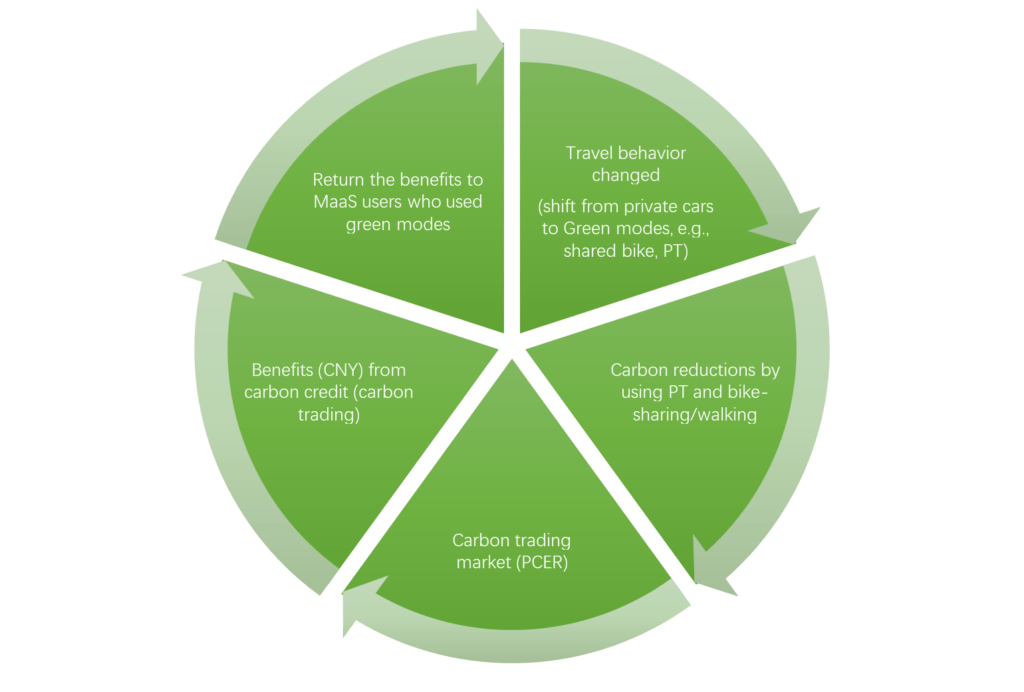
Figure 2: How MaaS system links with carbon market?
As participating in the Campaign, 21% of the users that primarily used cars for daily travel has now engaged in green travel, leading to a significant increase in citizens’ willingness to adopt green options. When the carbon reduction reaches a certain scale, the MaaS platform operators (e.g., Gaode Map), acting as the agent, will collect individual user’s carbon reductions from the green behavior shift (e.g., shifting from private car to shared bike and/or public transport), and submit the results to the authorities (BMEEB) for review and approval. Carbon credits are calculated based on the “Beijing Low-carbon Travel Carbon Emission Reduction Methodology (Trial Version)” developed by BMCT/BTI. The approved local certified emission reductions (PCERs) credits will then be traded at Beijing’s local ETS.
In 2021, Gaode alone achieved transactions of 24,500 tonnes of PCERs[4], with 15,000 tonnes traded with Beijing Municipal Road & Bridge Construction Materials Group. The second phase of PCER transaction reached to 97,600 tonnes[5]. The benefits from the carbon trading will return to green MaaS users in the forms of public transport discounts, shopping coupons, and the other donations to the public, with the aim to further promote green transport and other behavior change for sustainability.
- Project Highlights
- The “Beijing Low-Carbon Travel Carbon Reduction Methodology (Trial Version)” translated the green travel behaviors into carbon credits, integrating travel with carbon emission reduction, thus realizing the essence of green MaaS in promoting the green travel transition.
- The case of Beijing MaaS follows the idea of “government setting the stage, companies delivering the services”, fostering an open and inclusive process for MaaS development. Essentially, the government does not directly engaged in MaaS platform operation, but takes the lead in coordinating stakeholders (e.g., MaaS operators, mobility service providers, other governments), data sharing, and involves companies such as Gaode and Baidu to provide services on their respective platforms while sharing data with the ecosystem.
- To a certain extent, it breaks down the data barriers between the government, companies, and the other stakeholders, enabling high-quality real-time data sharing to assist companies in offering better services and enhancing their overall satisfaction.
- Simultaneously, the construction of transport service networks and transport information networks are being carried out, with information technology supporting MaaS services.
- Insights
- By leveraging public resources and strengthening collaboration between the government and companies, there is an opportunity to enhance participation by promoting information and data sharing.
- Combining carbon inclusive activity with carbon market: it is recommended to explore the integration of MaaS-related green transport into the carbon market. This exploration should involve studying more precise methodologies for carbon calculation and pricing.
Appendix: Beijing Releases MaaS 2.0 Work Plan, Beijing’s MaaS Enters the 2.0 Stage.
2023-06-29
http://jtw.beijing.gov.cn/xxgk/dtxx/202306/t20230629_3150511.html
Recently, the Beijing Municipal Commission of Transport and the Beijing Municipal Ecology and Environment Bureau jointly issued the “Beijing MaaS 2.0 Work Plan” (hereinafter referred to as “MaaS 2.0 Plan”), marking the official transition of Beijing’s MaaS to the 2.0 development stage.
In the MaaS 2.0 phase, Beijing will continue to adhere to the “green and integrated” development concept, focusing on providing high-quality “door-to-door” green integrated travel services as the foundation. The goal is to build a MaaS system with “proactive government + effective market + carbon-inclusive empowerment.” The work will concentrate on four key areas: “expanding and optimizing service scenario functions, building a mutually beneficial ecosystem, enabling carbon across all scenarios seamlessly, and creating a global benchmark for brands,” conducting eleven construction projects. The objective is to achieve significant improvements in the integrated green travel experience in core scenarios by 2025, significantly increase the coverage of carbon-inclusive services and the user base, with the MaaS platform serving no less than 6 million people daily for green travel, achieving a 20% penetration rate of green travel services, and reaching a 3% conversion rate for green travel.
During the MaaS 1.0 phase, the average daily green travel service reached 4.5 million people. Since November 2019, with the initiation of Beijing MaaS 1.0, utilizing social travel service platforms like Gaode Map and Baidu Map, real-time bus information, and bus/metro congestion queries were provided to the public, effectively improving the experience of combined travel methods such as “bus + walking.” For instance, Mr. Wang, a citizen, previously needed to leave home 20 minutes earlier to catch the bus by walking to the bus stop. After using the MaaS platform to check real-time bus arrival information, he only needed to leave 5 minutes early and could catch the bus right on time, saving 15 minutes per trip and significantly enhancing his travel experience. During the Winter Olympics period, the Beijing MaaS platform also launched special features such as navigation for the Olympic lanes, parking guidance around venues, and travel information release, providing services to millions of people during the event.
Since September 2020, Beijing MaaS introduced a green travel carbon incentive mechanism. Users who registered for the “MaaS Travel, Green Action Citywide” campaign on the MaaS platform could obtain corresponding carbon reduction credits by using public transport, walking, or cycling. They could then redeem these credits for public transport cards, vouchers, or donate them to environmental protection charities.
Over the past three years, Beijing MaaS has consistently adhered to the “green and integrated” development concept, receiving positive responses from society. As of now, the MaaS platform has attracted over 30 million users, providing green travel services to an average of 4.5 million people daily. The “MaaS Travel, Green Action Citywide” carbon-inclusive campaign has garnered over 3.54 million registered users, contributing to a cumulative carbon emission reduction of nearly 400,000 tonnes.
Compared to the MaaS 1.0 phase, the “Beijing MaaS 2.0 Work Plan” focuses on three key points: first, it improves the integrated travel experience by connecting online and offline travel services; second, it emphasizes carbon incentives and broadens carbon-inclusive activities; third, it establishes the Beijing Green Travel Integrated Alliance, incorporating various societal forces into the Beijing MaaS ecosystem and considering the interests of the government, transport companies, internet platforms, and users to perfect the distribution of benefits and incentive mechanisms, creating a sustainable development ecosystem for Beijing MaaS.
During the MaaS 2.0 phase, the incentive system with carbon emission reduction as the core will be upgraded, constructing a multi-dimensional empowering ecosystem involving data, policies, and finance. Building upon the current carbon-inclusive activities, citizens will be eligible for carbon incentives when choosing rideshare or electric vehicles for their travel, and the carbon-inclusive incentives will be extended to the Beijing-Tianjin-Hebei region. Furthermore, MaaS 2.0 will continue exploring financial empowerment measures, conducting research on integrating green travel and green financial tools to establish a low-carbon financial service system tailored for green travel. By 2025, the value of citizens’ green travel through the MaaS platform is expected to increase, offering more diverse and abundant carbon incentives.
Additionally, during the MaaS 2.0 phase, the Beijing Green Travel Integrated Alliance will be formed, attracting various societal forces to join the Beijing MaaS ecosystem. The alliance will take into account the interests of the government, transport companies, internet platforms, and users, improving the distribution of benefits and incentive mechanisms, and establishing a sustainable development ecosystem for Beijing MaaS.
In the MaaS 2.0 phase, there will be further expansion and enrichment of the Beijing MaaS brand. The plan includes designing and releasing the brand logo and slogan, conducting brand authorization, and carrying out comprehensive, multi-channel, and multi-level publicity to enhance the emotional connection between the public and Beijing MaaS. This will increase the influence and recognition of the Beijing MaaS brand, and strive to make MaaS a benchmark for both Beijing and the world.
The Beijing Municipal Commission of Transport and the Beijing Municipal Ecology and Environment Bureau will implement the eleven construction tasks according to the arrangements of the “MaaS 2.0 Plan” to provide citizens with more convenient integrated travel services by the end of 2025.
[1] Main part of this paper is the translation and updates of the Beijing MaaS case study from WRI’s report “Mobility-as-a-Service (MaaS) Guideline for Chinese Cities and Case Studies”. (DOI https://doi.org/10.46830/wrirpt.21.00063)
[2] https://en.wikipedia.org/wiki/Alibaba_Group
[3] http://jtw.beijing.gov.cn/xxgk/dtxx/202306/t20230629_3150511.html
[4] https://www.beijing.gov.cn/ywdt/gzdt/202203/t20220325_2639100.html
[5] https://www.sohu.com/a/665446123_649849
You can download the whole article at this link.
